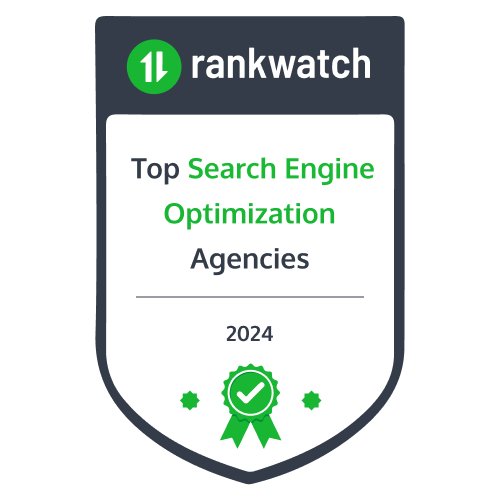How to Choose the Right SEO Strategies for Bloggers: 9 Tips and Tricks
Most blogs pump out content for the sake of more pages = more traffic. But the best blogs publish less and achieve more.
How? Search engine optimization (SEO).
There’s a common misconception that simply producing more content will skyrocket your organic traffic. The reality is much more nuanced. Top-performing blogs master the art of delivering high-quality, relevant content tailored to their audience and search engine algorithms.
It’s about striking the perfect balance between user intent and SEO best practices. The goal? Strategically crafting each piece to ensure maximum reach and impact.
So, if you’re a blogger looking to optimize your content and drive traffic to your site, this guide is for you. Here, we’ll unveil the nine best SEO strategies to land your blog on the first page of Google.
Let’s dive in.
What is SEO?
Search engine optimization, commonly abbreviated as SEO, is the art and science of optimizing your content so that search engines like Google can easily find, understand, and rank it.
That way, your content is discoverable by potential readers when they perform a search.
Marketers, bloggers, website owners, and entrepreneurs are all fighting for the top spot on major search engines like Google and Bing. SEO is the competitive game that decides who’ll win. And here’s why.
If you’re writing a blog post targeting “marketing software,” you’re competing against 2.6 billion other pages for clicks. That’s a lot of competition.
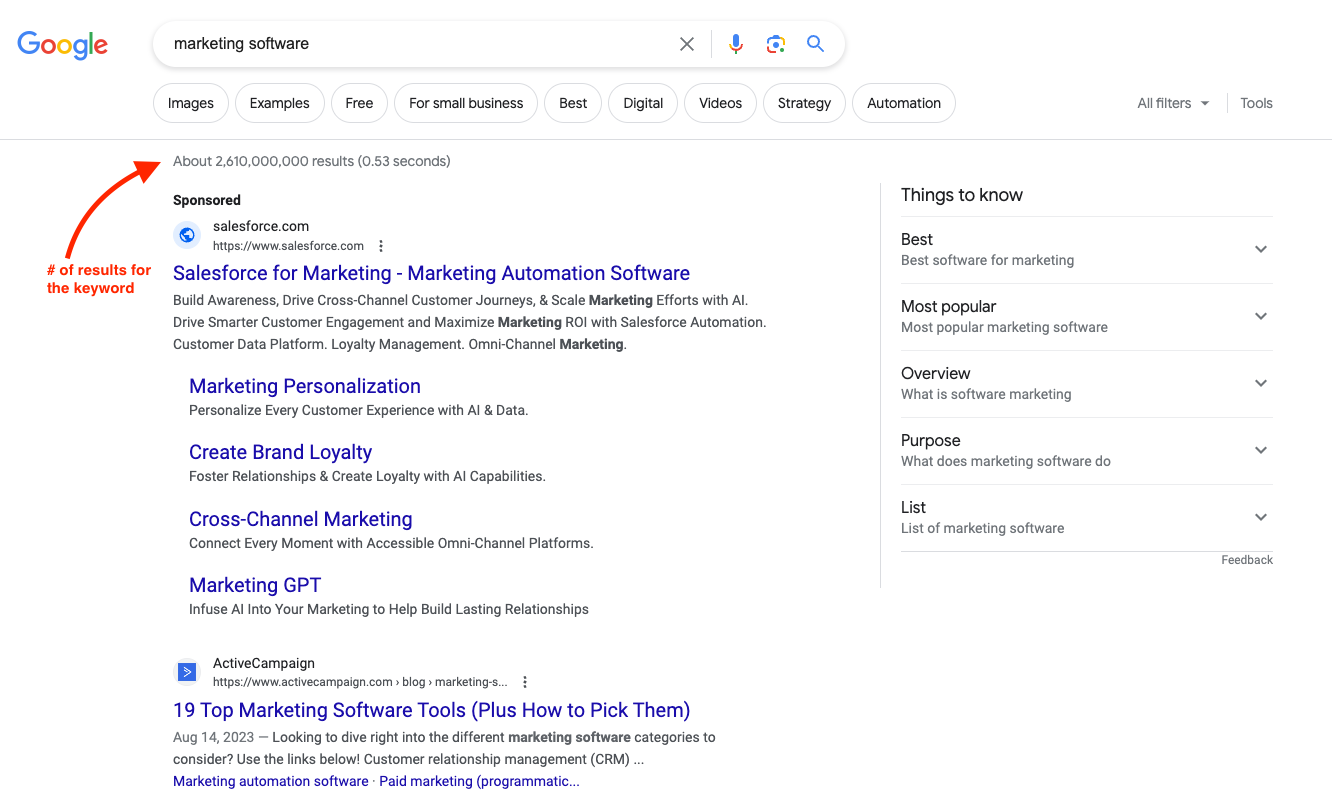
Screenshot by Brandon Lee
Studies show that over 25% of internet users click on the first Google search result, so you want to land that coveted spot over the competition. With SEO best practices, that spot is yours for the taking.
How Does SEO Work?
Now that you know what SEO is, it’s time to cover how to execute an SEO campaign. Ultimately, SEO involves following the website standards the search engines set.
Search engines aim to provide their users with the most accurate search results. That’s how Google has built a near monopoly in the search engine game and why its name is synonymous with looking something up. You know the common phrase, “Let me Google it.”
Google has built a strong reputation by pairing people with the exact information and content they seek. As a result, Google sets standards for how online content should look.
Let’s peel back the curtains on these specific standards.
E-E-A-T
Experience, expertise, authoritativeness, and trustworthiness (more commonly known as E-E-A-T) are guidelines from Google. It helps define how useful content is for web users.
E-E-A-T is a model bloggers use to create content that ranks well on Google. Here’s how it works:
- Experience: Does the blogger have first-hand experience in the subject matter they’re creating?
- Expertise: Does the writer have the appropriate credentials, topical knowledge, and qualifications to speak on this topic?
- Authoritativeness: Are reputable sites or experts citing or linking to this content?
- Trustworthiness: Was the content fact-checked and edited for accuracy before publishing?
Google’s E-E-A-T isn’t a direct ranking factor, but it does help content creators publish helpful content for their audience. You should be able to create the best and top-quality content for your audience. Hiring content writers can be the best option to get top-performing content for your website.
Google Ranking Factors
Besides E-E-A-T, Google ranks all websites based on additional criteria, such as:
- Backlinks: These are links from other websites back to yours.
- Search intent: How well your content matches what your target audience is looking for.
- Website speed: How fast your website is for incoming website users.
- Mobile-friendliness: How useful your website is for mobile devices.
- Domain authority: Your website’s rating for producing high-quality content over time.
- Keyword optimization: How well your content includes the keywords you’re targeting.
- Website structure: How your site’s architecture serves its users (and search engines).
Keyword Research
One of the first steps to any SEO campaign is keyword research. So what does that mean? The goal is to find keywords or search terms people use to find your content.
You can pinpoint popular keywords and weave them into your content by performing keyword research. Doing so will make it easier for Google to crawl your content and rank it for that specific search.
In-depth keyword research is the foundation of creating and publishing exceptional content. So don’t skip this step. And if you need help, plenty of keyword tools help you do the heavy lifting.
1. Rely On Content Optimization Tools
Back then, bloggers had to produce manual SEO reports, create Excel sheets of keywords, and write in-depth outlines.
This approach is tedious and difficult to scale if you want to increase your content production. Thankfully, we’re in 2023, and content optimization tools are available to automate most of this work.
Tools like Clearscope and SurferSEO make it easy to generate in-depth SEO reports:
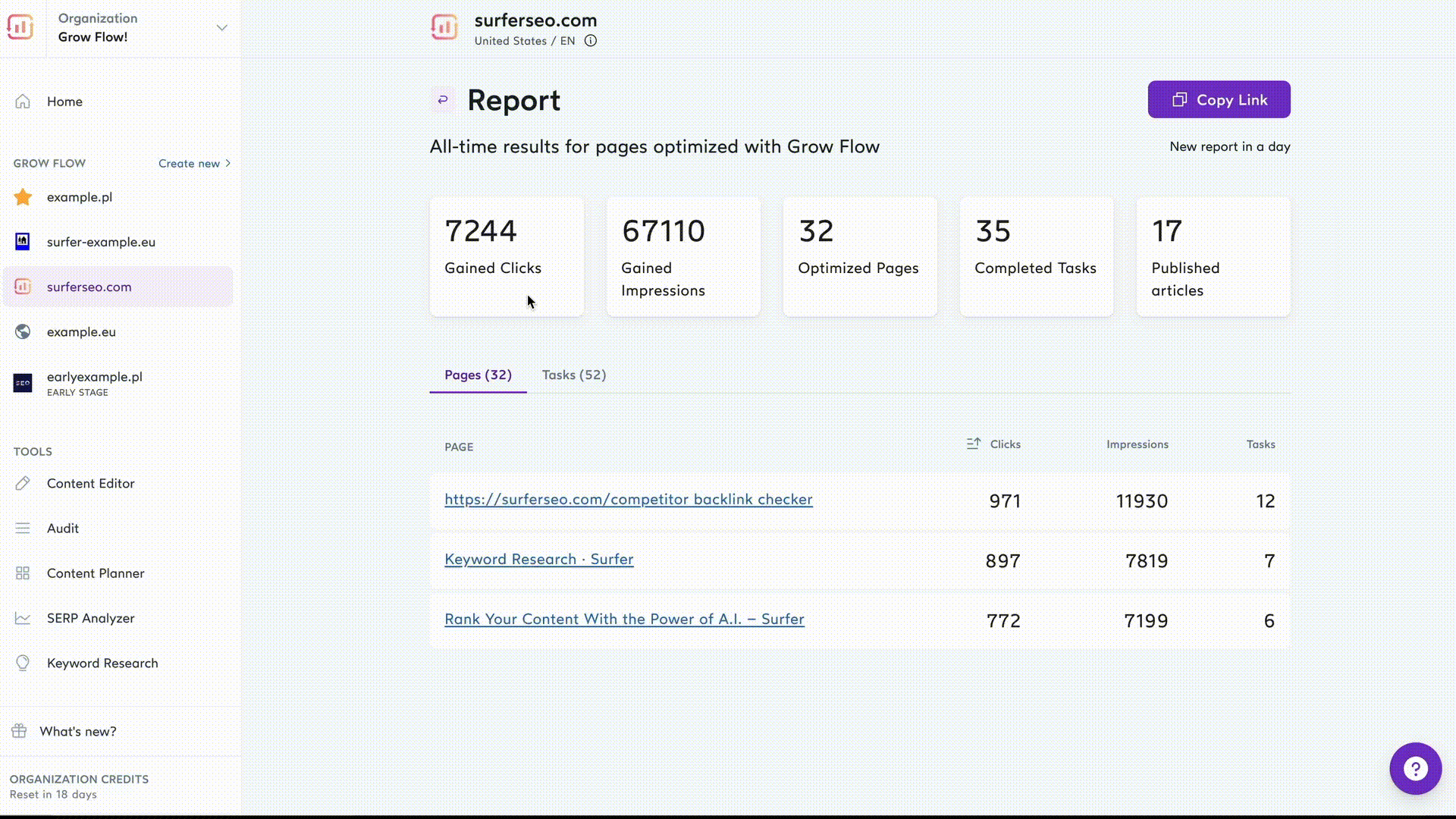
You can also use these tools to add the perfect balance of target keywords into your content to make it more SEO-friendly:
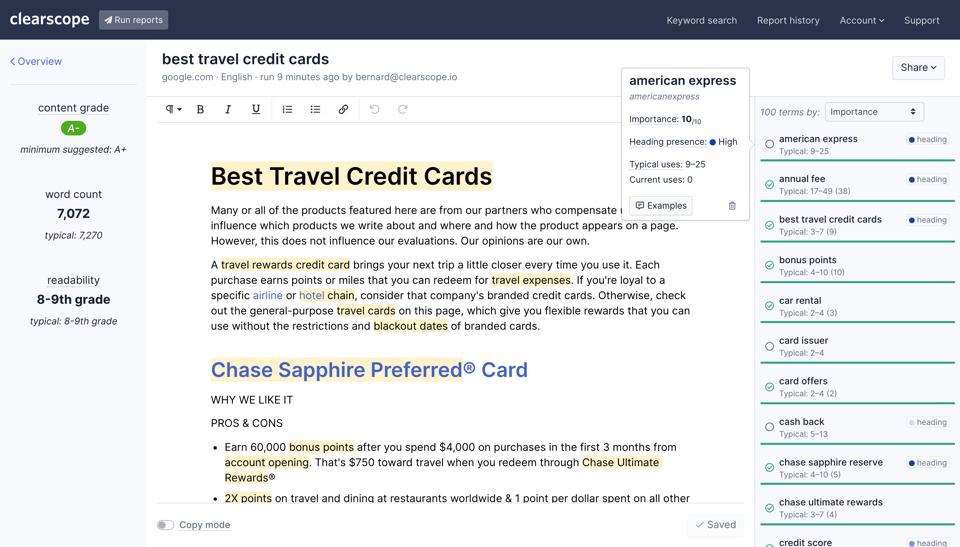
With content optimization tools, you can take a lot of the manual effort out of optimizing your blogs. You can also write your drafts in these tools, but we recommend doing this in Google Docs.
When you’re finally ready to publish, you can wave goodbye to manual copy-paste into WordPress. Wordable helps you publish all of your content with one simple click.
The best part? All of your optimization efforts transfer over as well. It’s a no-brainer solution to work smarter, not harder.
2. Create Content Funnels
Again, every blogger is bound to practice different SEO strategies depending on their niche and goals. Creating a content funnel is a great way to ensure you choose the right SEO strategy.
A content funnel shares content based on a reader’s position in your sales funnel. New readers enter the top of the funnel and convert once they reach the bottom.
Here’s how it works:
- Top-of-the-funnel content: Content that resonates most with readers new to your website. Think comprehensive guides and listicles.
- Middle-of-the-funnel content: Targets readers familiar with your website and learning more about your products or services. These are buying guides, ebooks, and whitepapers.
- Bottom-of-the-funnel content: These readers are ready to buy. Think of this content as case studies, product or service comparisons, or “alternatives” listicles.
To create your own content funnel, create content for each stage of the funnel. That way, you attract readers at every stage of the buyer’s journey. It gives you more opportunities to convert leads.
Every blogger needs to use different SEO strategies based on their niche and goals. Creating a content funnel is a great way to choose the right strategy.
For instance, Beaches of Normandy, a tour agency specializing in WWII history, effectively uses a content funnel strategy. They create content for each stage of the funnel. At the top, they have a content pillar called “Did You Know,” where they share interesting facts about WWII and the US military, attracting new readers and engaging those familiar with their content. For the middle of the funnel, they provide more in-depth information and quizzes on their social media that keep readers engaged and learning about their services.

For the bottom of the funnel, they create articles that blend engaging historical facts with subtle promotional content. An example is their article about the Utah Beach Museum. This article not only tells the story of Utah Beach and shares fascinating details about WWII but also highlights it as one of the landmarks included in their tours. This strategy effectively converts interested readers into customers by integrating sales-focused content with valuable historical insights.
3. Use Google’s People Also Ask Section
Since Google has changed its SERP design, they’ve now included a “People Also Ask” snippet. This section lists internet users’ questions concerning your chosen topic.
Did you know that 43% of search engine results pages (SERPs) now have a People Also Ask box?
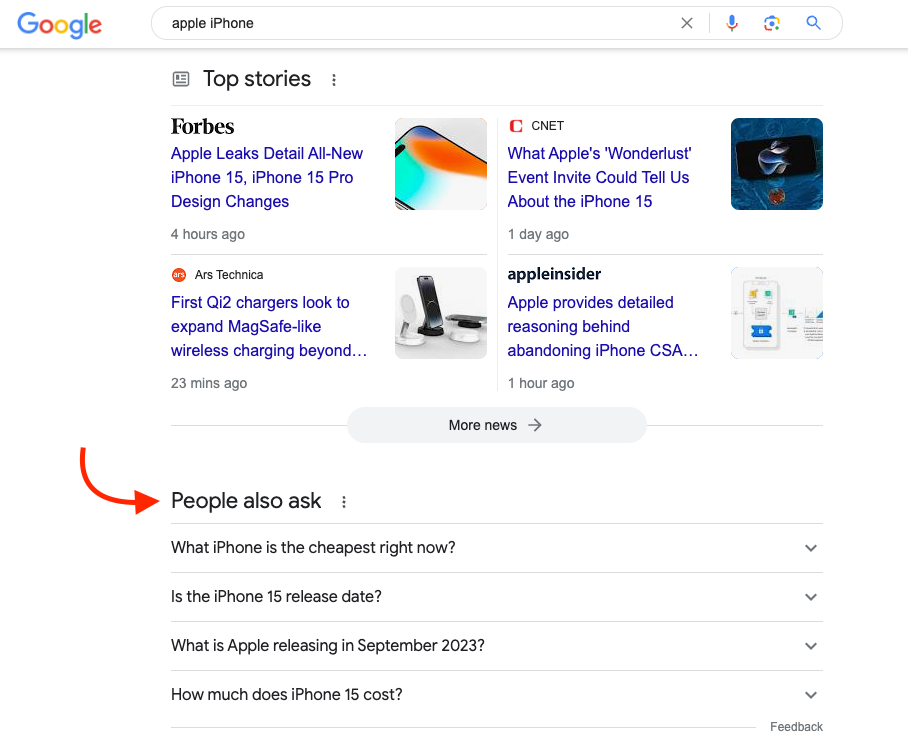
Screenshot by Brandon Lee
Since these search queries sit on the first page, landing a spot in this section is a surefire way to boost your organic traffic. So, if you want your blogs to rank for featured snippets, it’s wise to add a frequently asked questions (FAQs) section to the bottom of your blog posts. Think of these questions as long-tail keywords.
Adding these FAQs also helps reinforce the quality of your content according to Google’s E-E-A-T standards.
4. Determine Your Linking Strategy
There are two types of SEO links: backlinks and internal links. Backlinks are from referring domains. Anytime another website links back to yours, that’s a backlink. The quantity of backlinks can significantly impact your website’s SEO performance, and having a diverse and high-quality backlink profile is crucial for improving your website’s authority and search engine rankings.
You can also link back to your own content and web pages, which are called internal links. If you want to feature more internal links on your website, you’ll have to do more than add random links throughout your content:
- Create an Excel or Google Sheet for the priority internal links you need to drive traffic to.
- Only use relevant links during your internal linking strategy.
- Make sure your anchor text matches the internal links you’re using.
- Try to link to hub or pillar pages to build a clear site hierarchy.
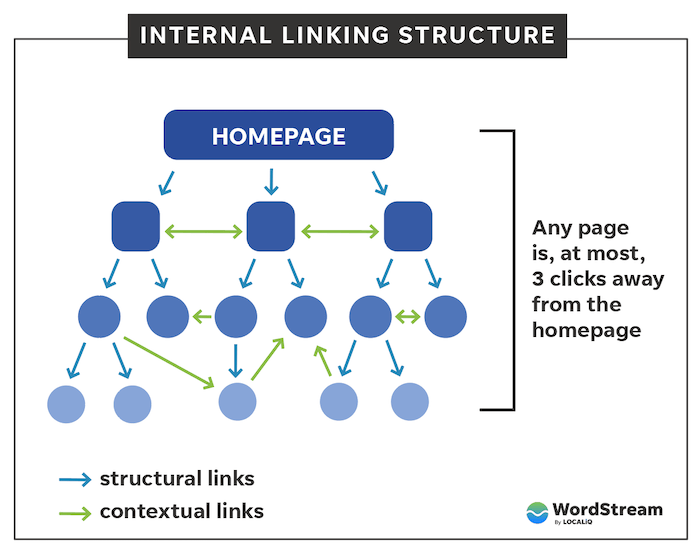
For building authority backlinks, follow these simple steps:
- Don’t buy $5 backlinks from Fiverr. Google knows these are spammy links and it’ll hurt your SEO strategy.
- Only use backlinks from authoritative websites. Quality backlinks count as a vote of confidence. If a great website links back to yours, it’s a sign that you’re producing exceptional content.
- Consider partnering with a proven SEO agency to scale your backlinking efforts (the right way).
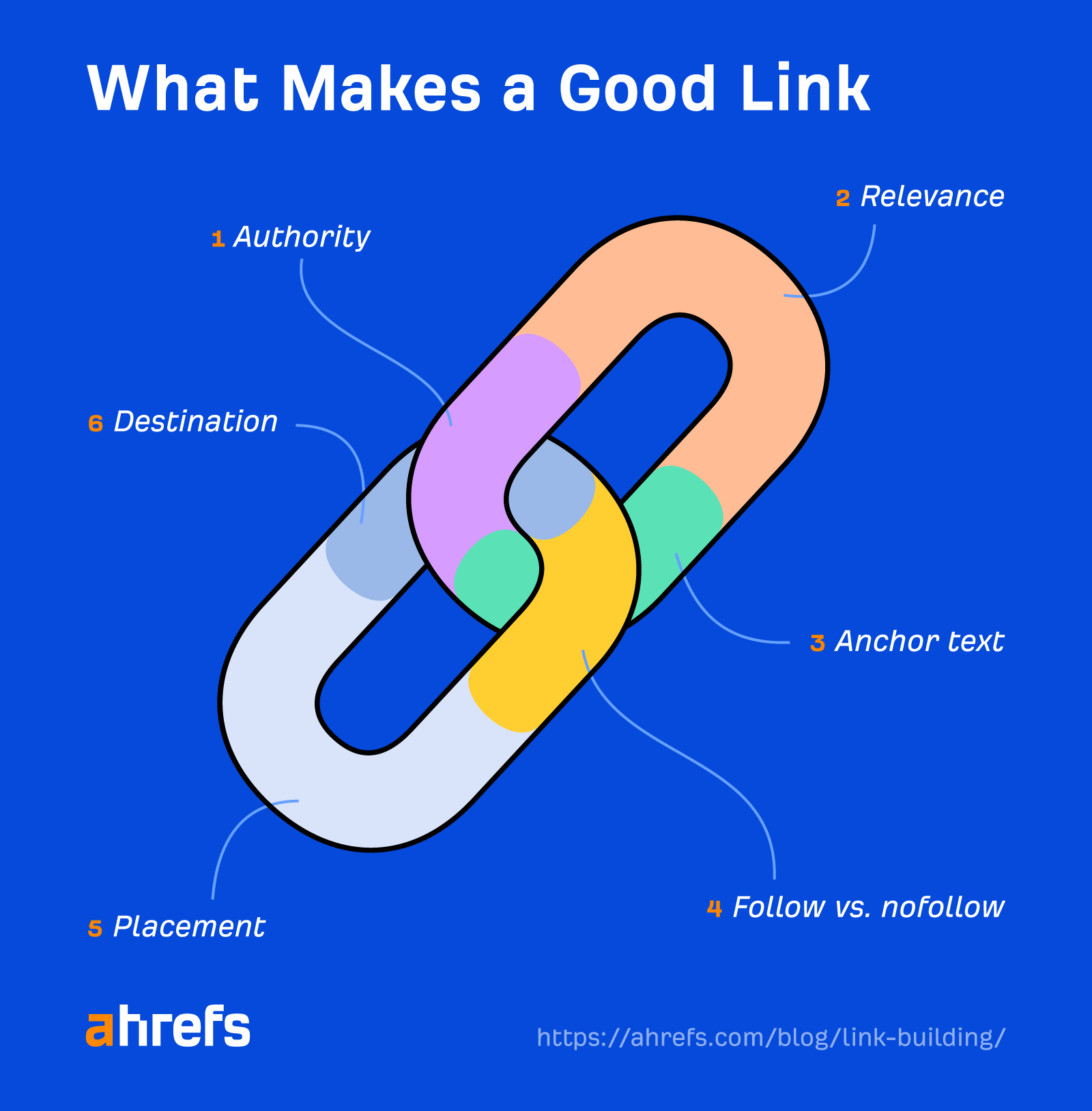
All the content you create needs to have the correct mixture of internal links to gain key backlinks. That way, search engines will rank your content above your competitors.
5. Organize Your Content Properly
Before doubling down on one specific SEO strategy for your website, you must create a content category structure for a smooth user experience (UX). That way, once your target audience lands on your site, they won’t immediately bounce and can easily navigate through it.
For example, most B2B blogs have evolved into resource centers. Resource centers are a collection of marketing collateral, such as:
- Blogs
- Whitepapers
- Webinars
- ebooks
- Quizzes
- Videos
- Guides
The most successful blogs organize all of these content assets into defined categories. Here’s what a well-organized resource library looks like:
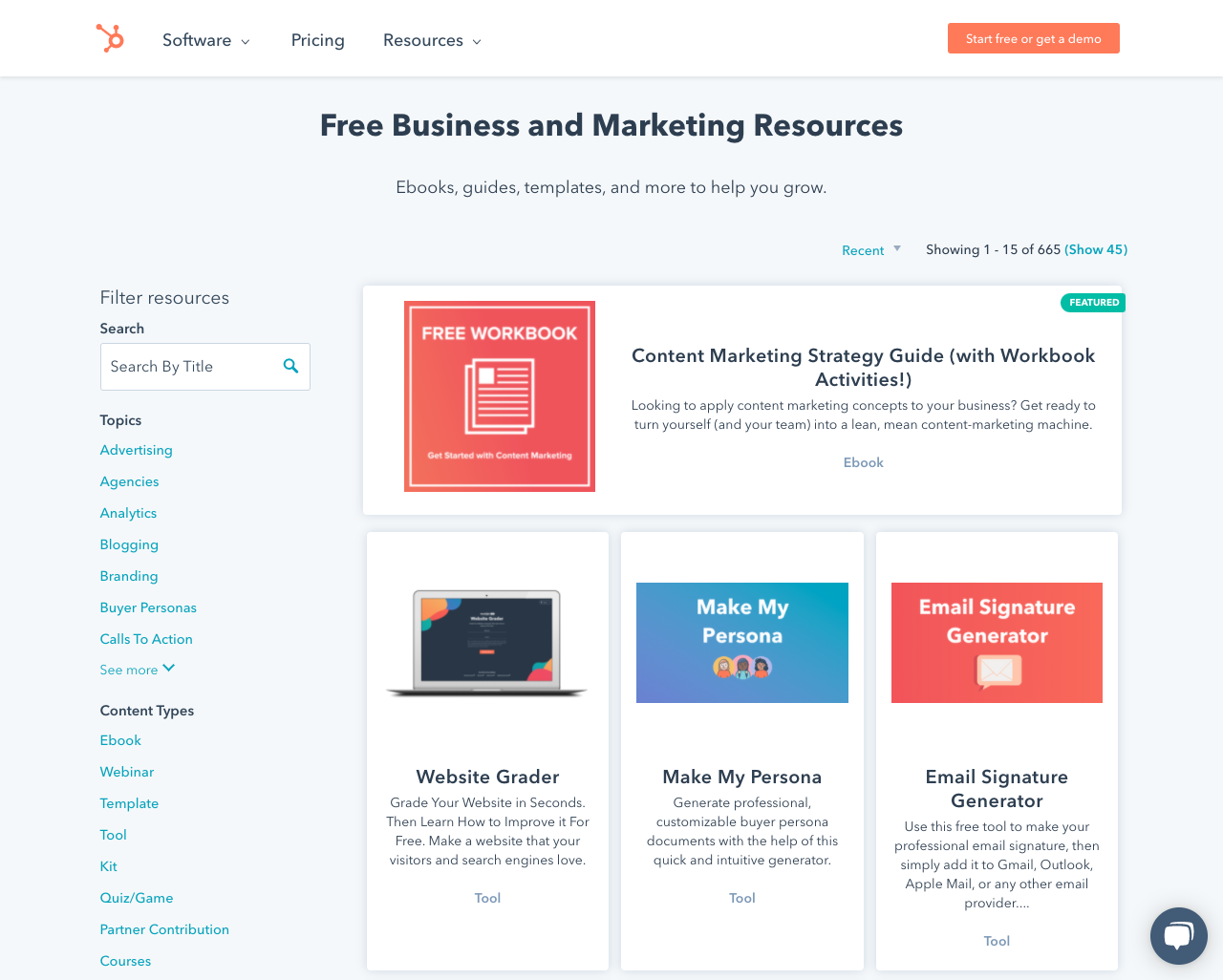
Every piece of content is tagged and labeled. There’s a simple navigation panel on the left side of the page where users can click on specific topics or content types. And better yet, if visitors want to find something quickly, they can perform a search.
A smooth UX reduces bounce rates and sends trust signals to Google (which helps improve your search engine rankings).
6. Focus on Evergreen Content
Doing well with SEO means playing the long game. What is the best way to do that? Create evergreen content. In other words, will readers find it beneficial today, a year from now, or even five years later?
Here are a few examples of evergreen content:
- What Is Content Marketing?
- How to Fix a Broken Toilet
- The Ultimate Guide to Changing a Flat Tire
Evergreen content will provide your website with a constant flow of website traffic you can use to monetize your blog, sell more products, or book more service calls (in perpetuity). Moreover, implementing different types of quizzes within your evergreen content can significantly enhance user interaction, keeping your audience engaged and returning for more.
If you choose this route, you’ll need to develop an evergreen content strategy. Remember that most evergreen keywords have high keyword difficulty because they’re very competitive.
But when you can find a keyword with low difficulty and decent search volume, double down on creating content around that specific topic. That’s what we call a gold mine.
7. Become an Expert in Google Webmaster Tools
Before becoming a successful blogger, you must learn how to use Google’s suite of webmaster tools. The two most popular webmaster tools are Google Search Console and Google Analytics.
Google Search Console is more of a technical SEO tool. It helps website owners find critical SEO issues and make the necessary adjustments to improve them.
For instance, Google Search Console can tell you if your pages are indexed by Google, if there are any broken links, and if you have any manual penalties against you. But you can also see your website’s performance in search results and core web vitals.

Screenshot by Brandon Lee
On the other hand, Google Analytics provides deeper insights into your website’s performance and details about your audience.
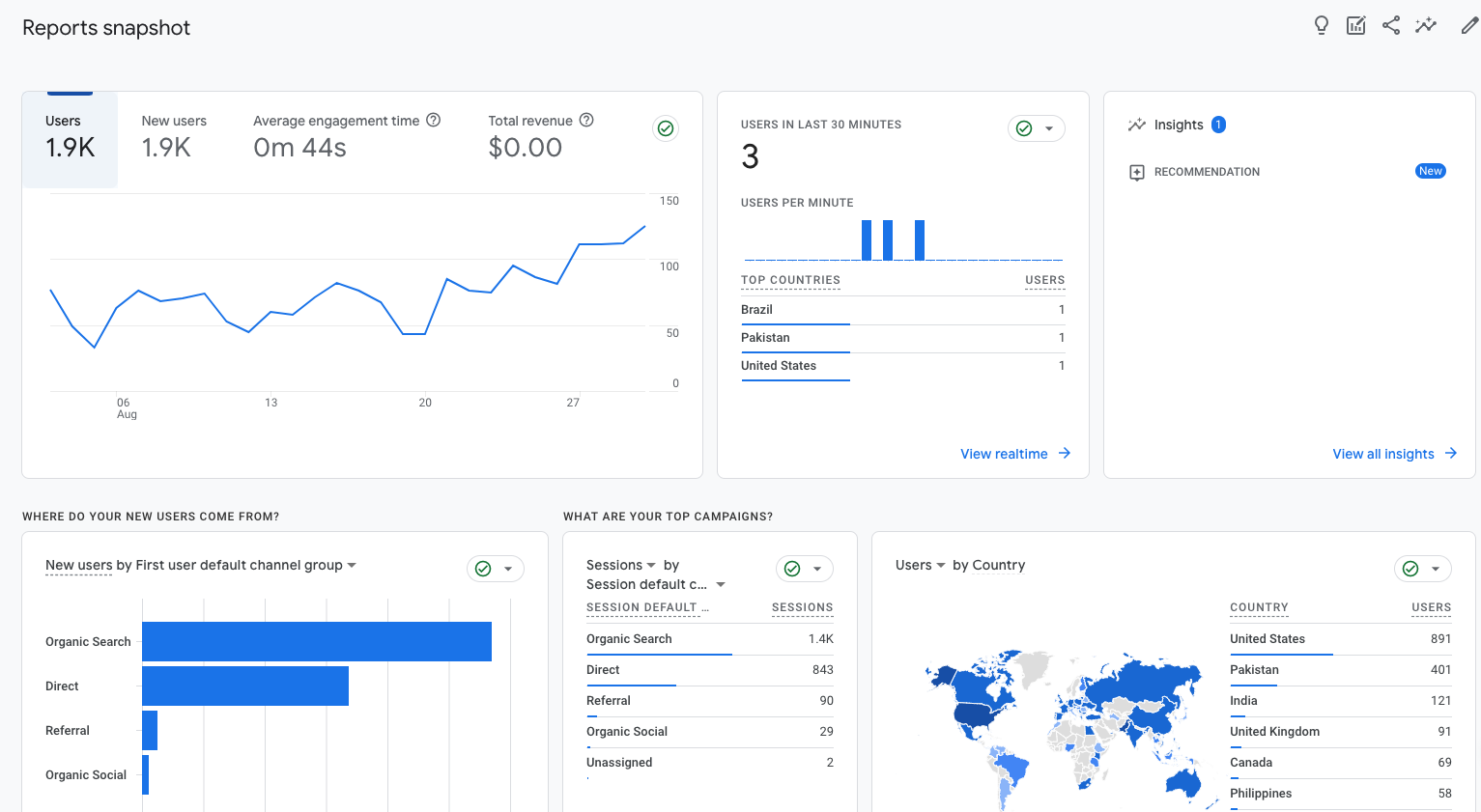
Screenshot by Brandon Lee
You can use Google Analytics to see how your website’s SEO campaign is performing. If it’s not performing up to your standards, that’s when you can use Google Search Console to patch up your campaign.
8. Build Authority
A major part of E-E-A-T is authoritativeness. In fact, that’s a major reason the most successful blogs come from industry leaders.
These people are highly respected in their industries, and Google is more likely to rank their content above another random blog. And other publications are more likely to link to these sites from industry experts.
The good news is that you can build authority by creating more content on other blogs. This process is more commonly known as guest posting (or guest blogging). Through guest posting, you can introduce your content and insights to wider audiences (while building your credibility).
Here are some other ways to improve E-A-T:
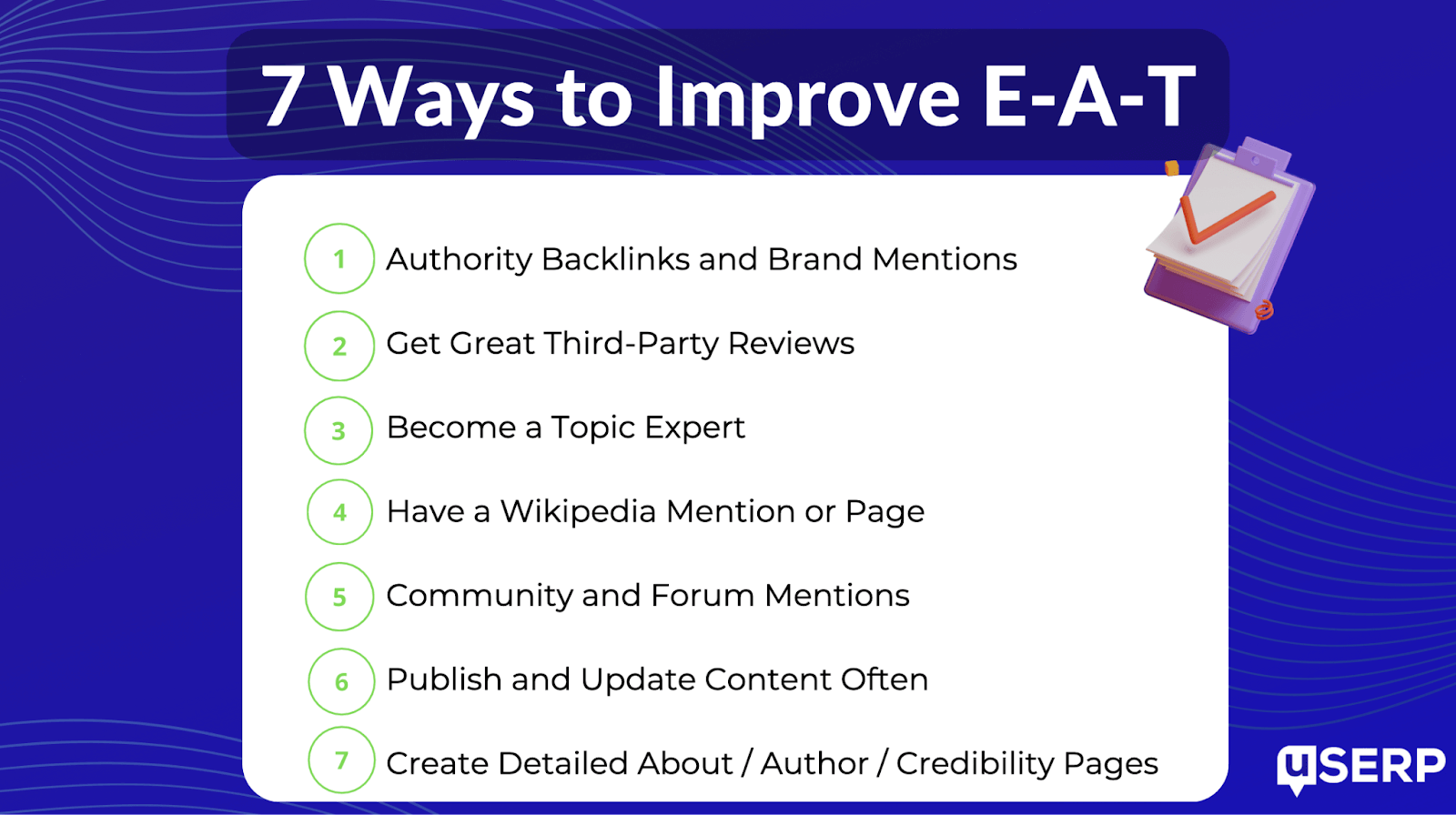
The more people who know you’re more likely to visit your blog and read more of your content. This will improve your website’s authoritativeness, especially as you acquire more backlinks.
9. Stay on Top of Google’s Updates
Google updates its algorithms every couple of months. And when they do, your traffic can plummet. Your Google Search Console might look something like this:

Screenshot by Brandon Lee
So, it’s best to quickly adapt your website to their standards to give yourself the best chance of keeping up with the pack.
For example, one of Google’s latest updates featured a new standard for creating helpful content. It also guides content creators on their guidelines for producing AI-generated content.
Staying on top of these updates makes adapting your SEO strategy in real time possible.
Wrapping Up
The mere volume of pages won’t set your blog apart. True success hinges on the deliberate blend of user-focused content and sharp SEO tactics.
So don’t just aim for quantity. Prioritize quality, relevance, and strategic optimization into the foundation of growing your blog. Then, sit back, relax, and watch your organic traffic soar as you climb to the top of search rankings.
Happy blogging!
Author Bio

Kelly Moser is the co-founder and editor at Home & Jet, a digital magazine for the modern era. She’s also the content manager at Login Lockdown, covering the latest trends in tech, business and security. Kelly is an expert in freelance writing and content marketing for SaaS, Fintech, and ecommerce startups.




